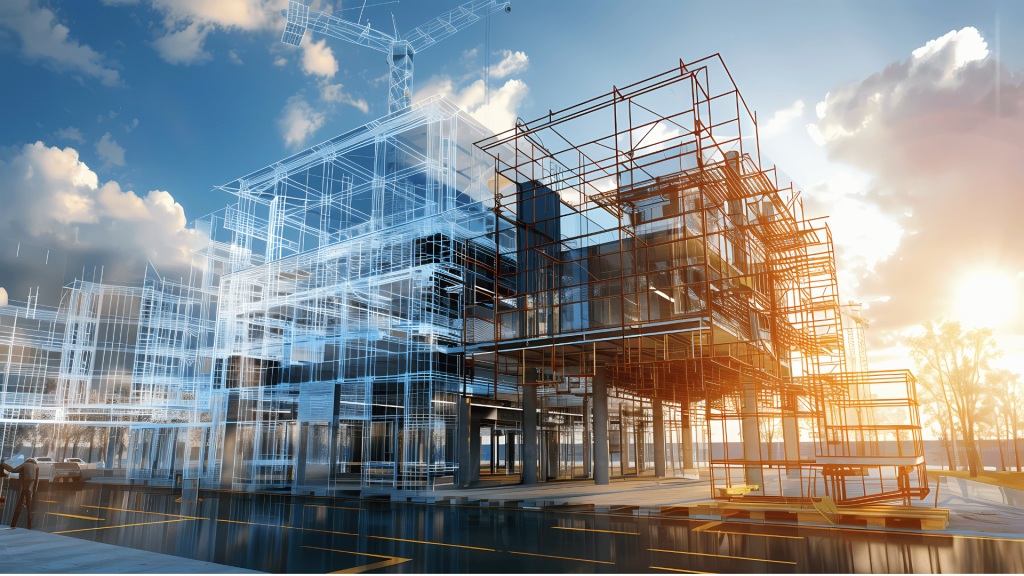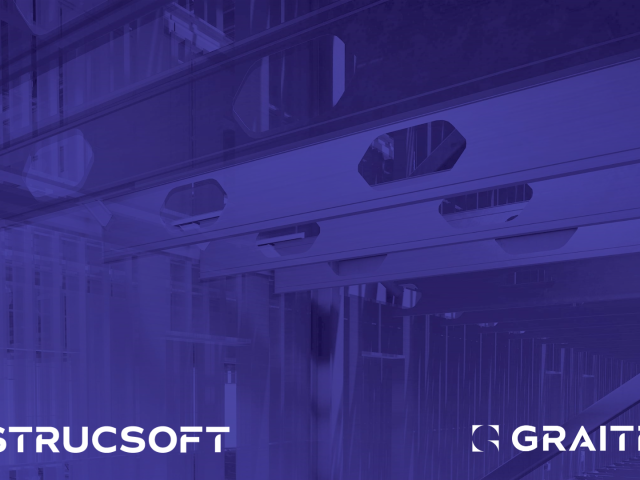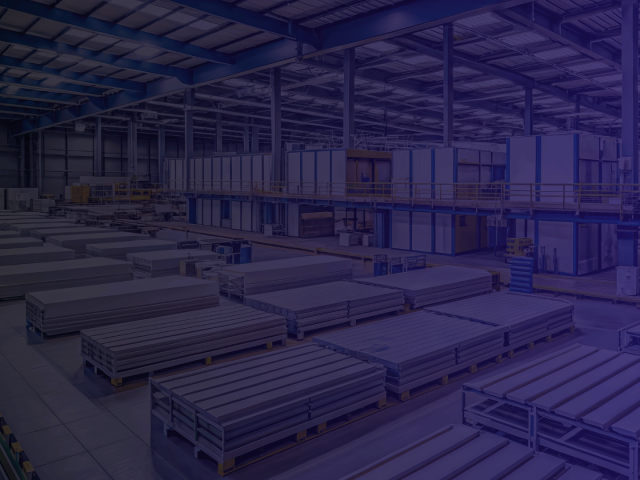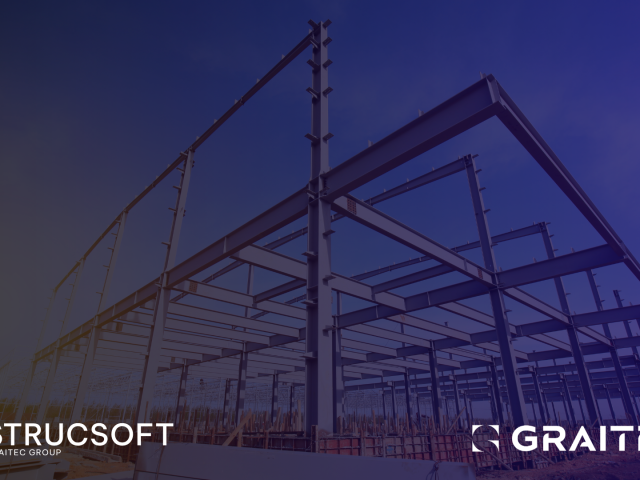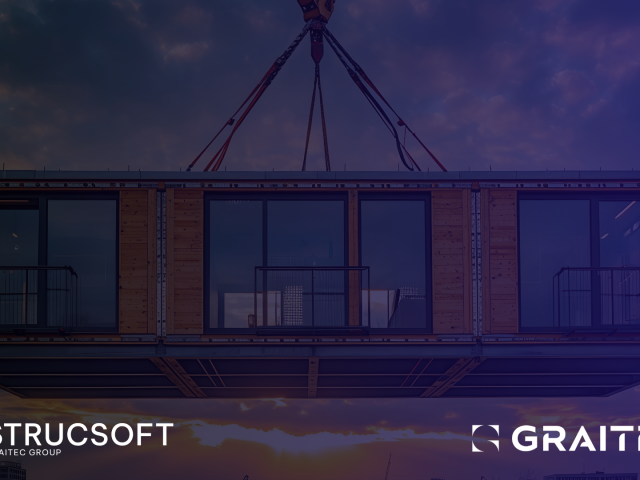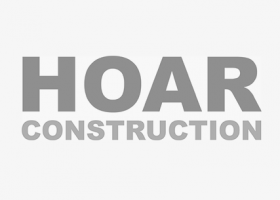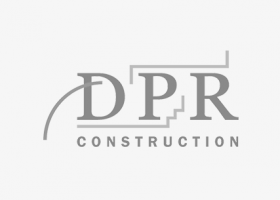With companies finding ways to utilize the construction technologies available to create more sustainable and reliable developments in the construction of a building, it is now
extremely important to better understand exactly how certain digital solutions can enhance the construction process.
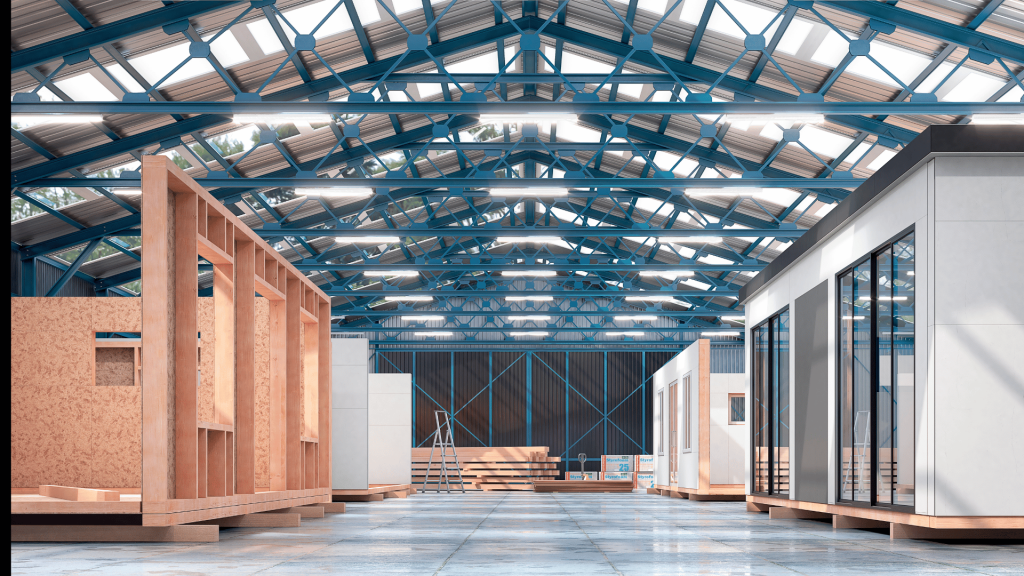
What is Offsite Construction
Offsite construction, consisting of prefabricated and modular construction, is a construction process where individual components or entire sections of a building are manufactured at a factory, before being shipped to the construction site for assembly.
The Early Stages
The concept of offsite or modular construction, which involves transforming a building into a manufactured product, is not a modern concept, particularly when it comes to housing.
The creation of prefabricated timber framed panels has been a large part to the improvement in architectural design in recent decades. This approach has offered significant benefits such as reduced on-site construction time, improved quality control, and decreased environmental impact.
By understanding how prefabrication has existed in the past, it gives a clear understanding of how the industry has developed. Architectural projects such as The Crystal Palace built in London, England in 1851 show how a prefabricated steel system allowed for quick construction on site and relied on modular design to construct the building in a short amount of time.
Many industries rely on modular design techniques to create individual elements which are later assembled into the final product on a production line. This is commonly noticed in commercial vehicle manufacturing, where a consistent design language is used, resulting in limited alterations throughout the construction of the product.
The Growth of Offsite Construction
As the industry continues to rely heavily on software solutions to better grow the design
process in construction, so have the standards of modular and prefabricated processes improved significantly in relation to the technology established.
Particularly so when creating a digital twin—a virtual replica of a physical building—allowing manufacturing teams to determine issues that would only later be discovered on site. For example, with a digital twin teams can identify and rectify clashes between structural and MEP elements, such as a ventilation duct intersecting with a structural beam. This would result in the avoidance of costly rework and delays on the project.
This means companies have begun to invest more time and place crucial emphasis into the conceptualization and design of the building. This means providing as much data as possible to a production team, ensuring a more accurate and streamlined construction process. By creating accurate design models with a high level of detail and geometry it can provide more accurate data to ensure better cost predictability whilst improving the whole quality of the build.
Benefits of Offsite Construction
Sustainability

One of the most important reasons for developing a prefabricated construction process is to improve sustainability and create less of a negative impact on the environment.
By developing accurate and data rich digital models, a better understanding of the exact amount of material can be considered earlier in the development of the building allowing for a reduction in waste.
With modular construction, entire sections of a building are manufactured and assembled in a factory before being installed on-site. With higher quality control protocols in place, energy efficient systems can be installed more precisely, improving the overall energy efficiency of a building.
Due to relatively decreased requirements for site management and reducing the number of materials transported to site, it will decrease the overall embodied carbon emitted from transporting a large amount of materials on site. The fast and efficient process that prefabrication provides reduces carbon emissions significantly by localizing the manufacturing of materials to a limited number of areas in order to consider limited transportation.
It is to be noted that prefabricated or modular construction typically utilizes timber or cold formed steel, both of which are regarded as sustainable materials. Wood is renowned for its ability to sequester carbon throughout its lifecycle, whereas steel is the most recyclable material at our disposal. Construction with steel framing contains at least minimum of 25 percent recycled steel, improving a building’s overall sustainability and environmental impact.
Employee Safety and Comfort
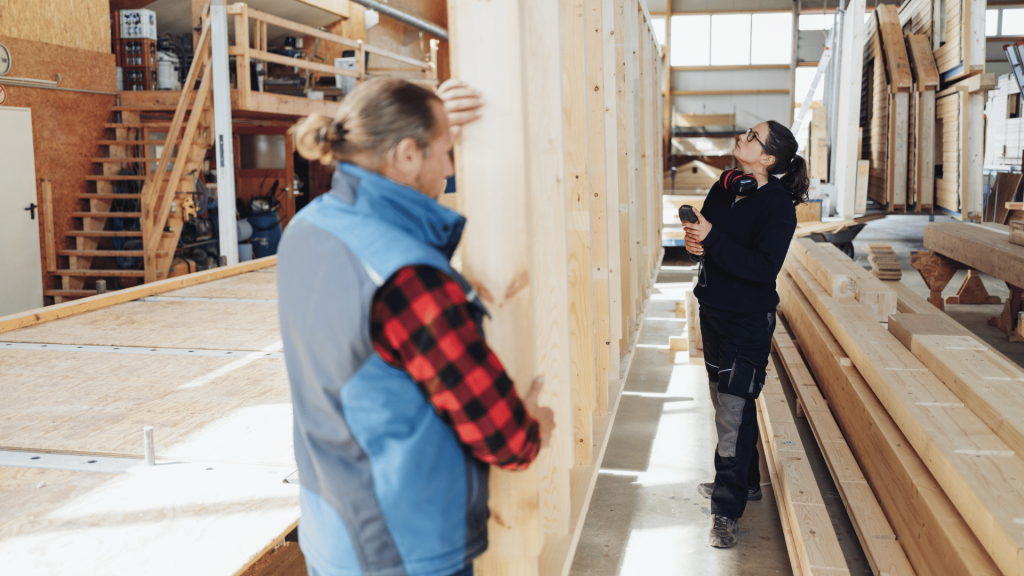
Offsite construction offers significant advantages in terms of worker safety and comfort compared to traditional on-site construction methods.
As the production is done in a more friendly environment, the safety and comfort of workers
developing prefabricated components can be controlled and optimized.
The safety protocols and standardized process implemented in factory settings provide better opportunities to create a positive impact on the mental and physical health of the workers.
For example, delays caused due to inclement weather can be completely avoided within a factory setting, allowing construction to continue throughout the year.
This is significant not only because 45% of construction projects worldwide are delayed due to adverse weather, but because working in adverse weather (such as a heat wave) can also decrease overall employee comfort and productivity.
Secondly, the benefits of working in a factory environment apply to standardized processes which allow for safe and efficient work practices, reducing the risk of accidents or injuries.
This can arguably result in improving the image of the construction industry, keeping veteran and skilled employees safer, while giving younger talent more of a reason to join the industry.
The Promise and Challenges of Offsite Construction
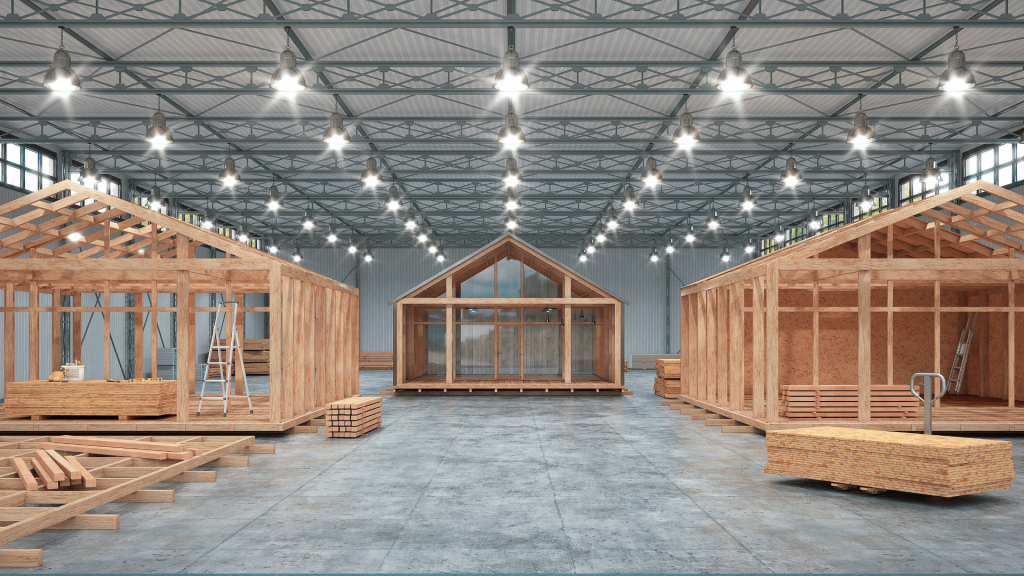
Offsite construction has advanced to create an efficient process considering manufacturing and construction early in the design stage.
At the same time, these modern methods of construction can be initially difficult for companies to begin to adapt to. Certain barriers of entry include investment in sufficient software and hardware (such as CNC machinery) to create a successful and efficient design process.
The industry will need to continue to develop innovations which when implemented into the process will help reduce the initial investment and standardize ways of working efficiently at a faster pace.
Still, with any architectural design process, there are issues. Limitations in constructing aesthetically attractive buildings can be an issue when considering modular design.
Architects can usually be unconvinced by the manufacturing requirements as this can impact the design on the building heavily.
The industry can begin to take this into consideration and start to develop better ways of producing more visually pleasing and individual modular designs.
Software Development for Offsite Construction
The Importance of Software and Collaboration
In order to begin an offsite construction process it is important for multiple disciplines to
have a strong understanding of collaboration software when constructing a building.
Collaboration software allows for each discipline to develop their individual design whilst relying on a single source of truth. This allows for architectural, structural and MEP teams to communicate inconsistencies in the design to other construction teams, which can be resolved before the construction phase.
By creating a successful collaboration process it will ensure that the development of the offsite fabricated materials are as accurate as possible to avoid issues when it comes to application on site.
Collaboration software can come in many formats and require certain interoperability to
communicate different digital models. This makes it imperative to ensure that each profession has the capability to communicate data through design software that will allow for efficient collaboration.
When is Offsite Construction Necessary?
Offsite construction can be relevant in many different situations. Intricate MEP systems can usually benefit from the large amount of design the process requires by considering issues offsite and providing resolutions in digital software.
As stated earlier, this results in improved collaboration between various trades, and makes it significantly easier to resolve issues virtually, thereby negating the need for rework.
Limited space on-site and time restrictions can avoid noise pollution and the impact on
surrounding areas when producing prefabricated solutions, while improving the time-to-occupancy of the building.
The reduction of onsite presence allows for less congestion which is extremely beneficial for largely populated urban areas and city centers, marginally improving the quality of life of surrounding neighbors, and reduce traffic impact.
Temporary structures can be easily disassembled upon completion of use due to modular
construction, allowing for materials to be reused. The assembly requirements and for onsite application provide this possibility as connection methods need to be considered in the construction strategy.
Data Requirements for Offsite construction
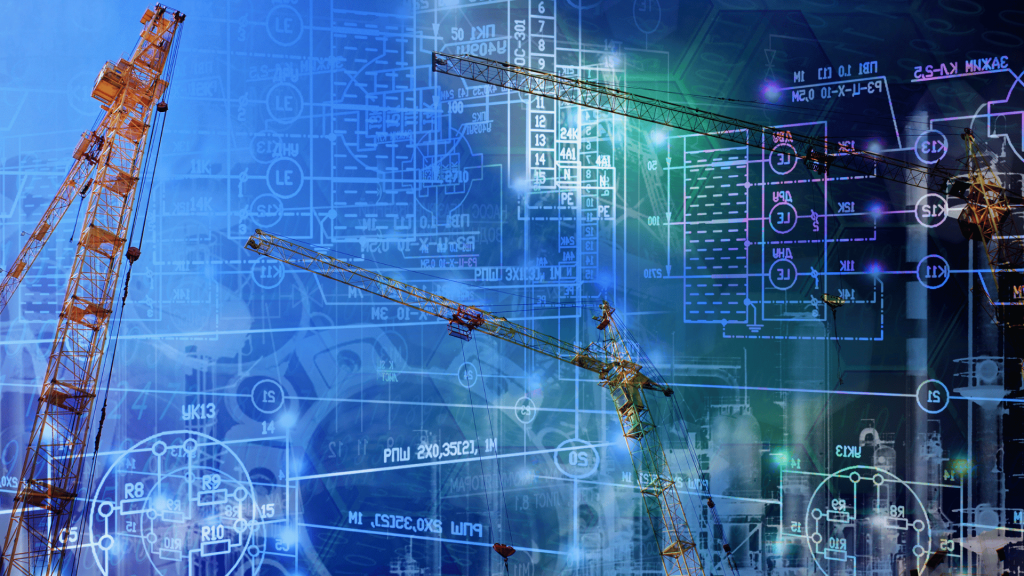
As many of the materials for offsite construction can be produced in house, the design process set by the company will influence the production data needed
Data for offsite construction can include:
- Design details related to prefabrication, such as structural engineering data
- CNC operation codes to produce materials
- Documentation such as assembly drawings for prefabricated panels and material specifications such as cut lists.
- Other data that is relevant to onsite application and modularized connection details.
In order to fully capitalize on the benefits offered by offsite construction including modular and prefabrication techniques, it is crucial to leverage digital solutions that power this innovative construction method.
These solutions include software that automate the process of designing, collaborating and manufacturing one of the most critical aspects of an offsite construction project, which is the structural framing. Click the link below to learn more about offsite construction software such as MWF Pro Metal and MWF Pro Wood.
For more information on our products or design services, visit strucsoftsolutions.com, or email us at info@strucSoftsolutions.com

